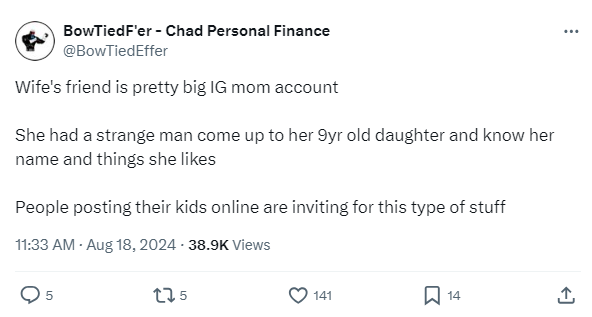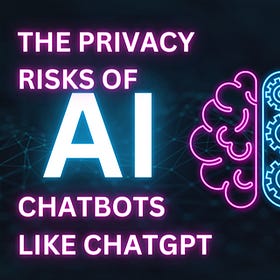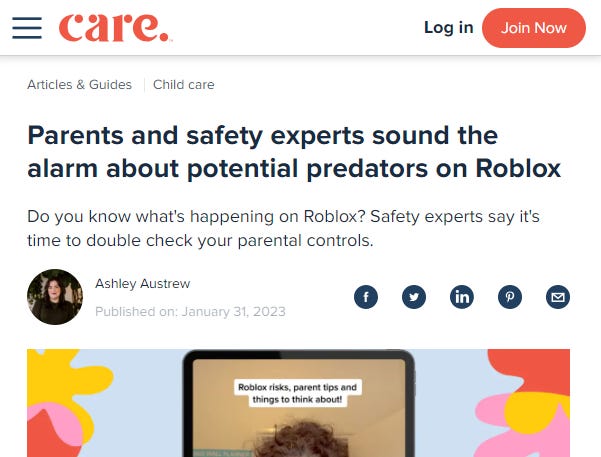Internet Safety and Privacy Tips for Kids
A beginners guide for parents looking to enhance online safety for your children
This post is intended for readers with children. Even if you don’t have kids, your friends or family may find this post useful. Please help spread the word and share it using the button below.
In September 2023, Meta (parent company of Facebook, Whatsapp and Instagram) announced that it would start using public user posts for AI training across all of its platforms in the United States and other select regions. This includes text, photos and videos. Any content you’ve posted since 2007 will be fair game, except direct messages (supposedly).
In May 2024, Meta disclosed that it would start expanding this program to the EU and U.K. The GDPR will allow UK and EU residents to opt out of this program, though no guarantee that will be granted. No such opt-out option will be made available to U.S. residents. And even if you successfully opt your content out, if someone else posted the same photo or information, it will get added to Meta’s AI model.
While data of users under 18 is out of scope, there’s still a strong likelihood that any posts by someone over 18 that include children’s data will still get captured. A common scenario would be a parent posting pictures or other data about minor children. Or even friends or relatives doing the posting.
With this data grab expansion by Meta, it’s a good time to reevaluate how to protect your kids’ privacy online. This guide provides parents with practical steps to enhance online safety and privacy for their kids and explains specific risks and threats to prepare for.
Why Protect Your Children's Privacy Online?
Before getting into how to protect your children’s privacy and security online, let’s first look at why to do so in the first place. While that may seem obvious to our readers, we’ll cover the basics for friends and family that aren’t as privacy savvy.
Personal Safety: Protecting personal information can prevent dangerous situations such as stalking, abduction, or cyberbullying. Like this example noted on X by BowTiedF'er 👇
Identity Theft: Children's information can be used for identity theft, which can have long-term financial and legal implications.
Inappropriate Content: By limiting data collection, privacy protection can reduce the likelihood of children receiving targeted ads or recommendations for content that a parent would not approve of.
Mental Health: Exposure to inappropriate content or online harassment can affect a child's mental and emotional well-being.
Data Exploitation: Companies may collect and misuse children's data for targeted advertising or other purposes without parental consent.
Online Predators: Personal information can be used by predators to contact and exploit children. The more personal information they have, the more relatable and appealing a predator can sound.
Deepfakes. Bad Actors can use photos of your children to create fake photos, including pornography.
Specific Threats and Risks
Unfortunately these threats and risks are not theoretical. Real life examples pop up in the news all the time. Here are a few:
1. Cyberbullying
Children can be harassed or bullied online, leading to emotional distress.
Example: In 2017, a 12-year-old girl from New Jersey took her own life after being cyberbullied on social media (source).
2. Online Predators
Predators may pose as children or trustworthy adults to exploit minors.
Example: In 2013, a man was arrested for posing as a teenage boy online to solicit inappropriate photos from minors (source).
3. Data Breaches
Online platforms that children use may suffer data breaches, exposing personal information.
Examples: In 2015, the VTech data breach exposed the personal information of 6.4 million children (source). In 2018, a data breach at Facebook exposed the personal information of millions of users, including children, highlighting the risks of data collection by social media platforms (source).
4. Phishing and Scams
Children may fall victim to phishing attacks or scams that seek to steal personal information. As a result, they’ll reveal sensitive personal information that can lead to harm.
Example: Scammers can create fake gaming websites or apps to lure children into providing personal information.
5. Legit Apps and Services Spying on Children
Major websites will often fail to disclose the scope of their data collection activities and/or collect data in violation of laws or their privacy notice. This can also lead to the collection of sensitive information about children and the building of profiles for targeted advertising.
Examples: In 2019, YouTube was fined $170 million for violating the Children's Online Privacy Protection Act (COPPA) by collecting personal information from children without parental consent (source). Additionally, popular apps like Angry Birds 2 and Candy Crush Saga were found to collect and share identifying information, including general locations, with third parties (source).
The Privacy Risks of AI Chatbots Like ChatGPT
AI chatbots can be incredibly useful for productivity and creativity. But they're also privacy traps if you're not careful. We outline the key risks, suggest things to look for when choosing an AI assistant, and name some online privacy-friendly AI alternatives to play around with.
Practical Steps to Protect Your Children's Privacy Online
1. Educate Your Children
Teach children about the importance of privacy and the risks of sharing personal information online. Use the real life examples noted above or as newer ones come up.
Encourage them to speak up if they encounter anything uncomfortable or suspicious. These are great teaching moments.
Teach them to strategically use pseudo (i.e. fake) information – names, birthdays, location, etc. – when creating accounts. Or better yet, create your kid’s accounts for them.
2. Use Parental and Technical Controls
Utilize parental control features on devices and apps to monitor and restrict children's online activities. This reduces the touchpoints your child will have with potential privacy traps.
Set age-appropriate content filters to block harmful websites, apps and plugins.
Create strong usernames and passwords. Avoid using personal details in usernames and passwords. Use a combination of letters, numbers, and symbols. Enable 2FA when possible.
Make sure apps are updated.
Consider setting up a separate wifi network just for kids to access. This gives you greater control over the sites they visit and you can monitor internet traffic easier.
3. Use Privacy Tools
Use ad blockers to prevent data mining by advertisements.
Use privacy friendly search engines. Set default search engines to privacy-focused options like Brave or Mojeek.
4. Monitor Online Activity and Social Media Use
If your children have social media profiles, regularly check the profiles and privacy settings.
Follow and friend your kids on social media. This allows you to monitor their public activity and guide them on safe practices.
Set strict privacy settings. Ensure that social media and app privacy settings are configured to limit data sharing.
5. Be Cautious with Apps and Games
Research apps and games before allowing children to download them. Check reviews and news reprots. Roblox, for example, is a popular kids game but has been exploited by child predators.
Disable in-app purchases and location tracking on children's devices.
6. Limit Screen Time
Establish rules for screen time to reduce exposure to potential online threats. Less time online reduces the risk of privacy and security violations.
Encourage offline activities and hobbies to balance digital life.
7. Lead by Example
Model good online behavior for your children by being mindful of your own digital footprint.
Show them how to safely navigate the internet and handle personal information.
Wrap Up
Protecting our children's privacy online is not something nice to do if you have time - it's a necessity in our digital first era. Advancements in AI will only heighten the risks as it becomes easier to find personal information online, launch sophisticated scams, and create deepfakes. As parents and guardians, we can shape our kids' digital footprints and safeguard their online interactions. Implementing the strategies outlined in this guide will go a long way towards creating a safer digital environment for them and making them a harder target.
Looking for help with a privacy issue or privacy concern? Chances are we’ve covered it already or will soon. Be sure to follow us on X and LinkedIn for updates on this topic and other internet privacy related topics. We’re also now on Rumble and YouTube. Subscribe today to be notified when videos are published.
Disclaimer: None of the above is to be deemed legal advice of any kind. These are *opinions* written by a privacy attorney with 15+ years of working for, with and against Big Tech and Big Data. And this post is for informational purposes only and is not intended for use in furtherance of any unlawful activity.
Check out our Personal Privacy Stack here.
Proton is running a limited time promotion right now on their core offerings like Proton VPN and Proton Mail. Get privacy peace of mind for as little as $3.99 per month (affiliate link).
If you’re reading this but haven’t yet signed up, join the growing Secrets of Privacy community for free and get our newsletter delivered to your inbox by subscribing here 👇





